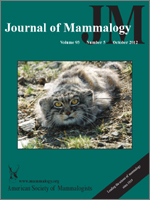We reviewed the literature on burrows of North American ground-dwelling squirrels to assess factors influencing burrow length and depth. Prior research suggested that soil characteristics and burrow age can influence burrow dimensions; we extended these findings by evaluating the influence of body size, temperature stress, and degree of sociality. We found that body size was positively correlated with burrow length and depth, probably because larger species require more space for underground activities. This relationship did not hold for Marmota monax and M. flaviventris, for unknown reasons. Burrow length scaled allometrically with body mass (b = 0.72), possibly because the metabolic effects of limited ventilation in burrows placed a constraint on burrow length. Temperature stress was not related to burrow depth, perhaps because of the insulation provided by snow and soil. The more highly social species excavated longer burrow systems, probably because of the greater space needs of multiple residents per burrow.
How to translate text using browser tools
1 October 2012
Factors influencing burrow length and depth of ground-dwelling squirrels
Dirk H. Van Vuren,
Miguel A. Ordeñana
ACCESS THE FULL ARTICLE

Journal of Mammalogy
Vol. 93 • No. 5
October 2012
Vol. 93 • No. 5
October 2012
body size
burrow depth
burrow length
ground squirrels
ground-dwelling squirrels
sociality
temperature stress




